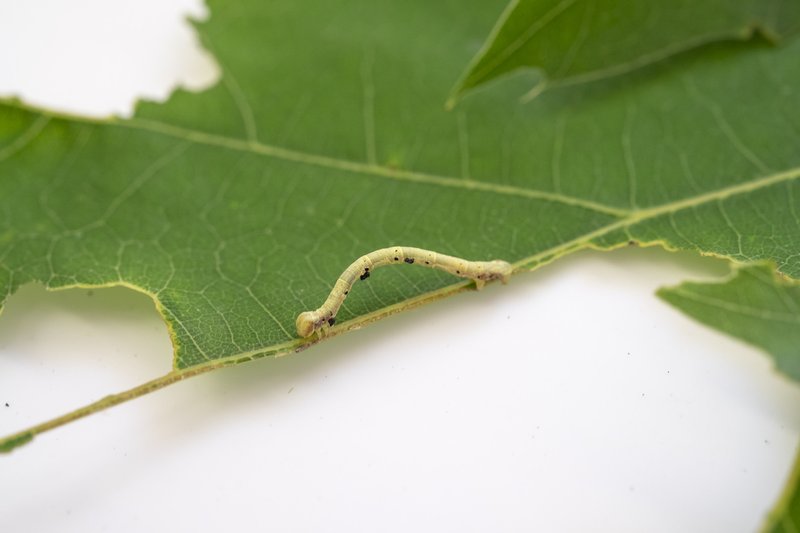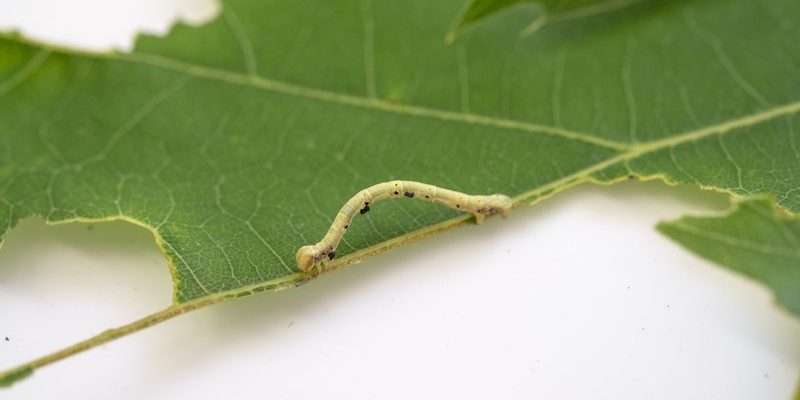
Inchworms, also known as loopers, are the larvae of various moths. They get their name from their unique way of moving, which involves inching along in a looping motion. You might think of them as small, green caterpillars that can devour leaves at an alarming rate. If you’re a tree lover or just someone who enjoys a well-kept yard, knowing which trees are particularly susceptible to inchworm damage can save you a lot of headaches down the road.
Let’s dive into the different tree species that often fall victim to these pesky pests and explore how you can recognize and manage inchworm damage.
What Exactly Are Inchworms?
To understand why some trees are more vulnerable to inchworm damage, it’s helpful to know what inchworms really are. As I mentioned, these are the larvae of certain moths, such as the Eastern tent caterpillar and the cankerworm. They thrive in various environments and tend to be more active during the spring and early summer months when trees are bursting with new leaves—a buffet for these hungry caterpillar-like pests.
Inchworms have a unique movement style that can make them tricky to spot. Instead of crawling like other caterpillars, they draw up their rear end and stretch out their front, creating a looping motion. This sneaky movement helps them blend into their surroundings, which is why you might not notice them until the damage is done.
So, why should you care? Well, inchworm populations can grow rapidly, leading to severe defoliation on the trees they infest. A single inchworm can eat several leaves in just a few days, potentially weakening the tree and leaving it vulnerable to diseases and other pests.
Deciduous Trees at Risk
Deciduous trees, which shed their leaves each autumn, are often prime targets for inchworm damage. This group includes popular trees like **maples, oaks, and elms**. The lush canopies of these trees provide the perfect feast for inchworms when they hatch in spring.
– **Maple Trees**: Maples are particularly vulnerable to the cankerworm. These inchworms love to munch on the tender young leaves, which means a healthy maple could look barren in a matter of days. If you’re noticing stripped branches, it might be a warning sign of an inchworm invasion.
– **Oaks**: Oak trees are another favorite snack for inchworms. Both the Eastern tent caterpillar and the green inchworm enjoy feasting on oak leaves, which can lead to significant foliage loss. An oaky backyard can quickly turn into a munching ground if not monitored.
– **Elms**: Elm trees are also susceptible to inchworms, particularly during wet spring seasons when the pests thrive. With their broad, flat leaves, elms can easily attract inchworm populations that can munch their way through your yard’s beauty.
Recognizing the symptoms of inchworm damage—like sparse leaves or visible droppings—can help you catch an infestation early and take action.
Conifers and Their Vulnerabilities
While deciduous trees get the most attention, it’s essential to consider conifer trees, like **pines and spruces**, when discussing inchworm vulnerability. Though not as commonly affected as their deciduous counterparts, certain species can still suffer from inchworm damage.
– **Pine Trees**: Some types of inchworms, like the **pine looper**, specifically target pines. The damage can be less visible since their feeding typically occurs on older needles. However, if you’re a fan of pines, keeping an eye out for needle drop or browning can save you trouble down the line.
– **Spruces**: Spruce trees can also be affected by species like the **Eastern tent caterpillar**, particularly during their larval stage. They love to gnaw on the tender foliage, leading to stunted growth. A healthy spruce can quickly lose its lush appearance if left unchecked.
You might wonder how these trees can defend against inchworm damage. The truth is, healthy, well-nourished trees are less likely to suffer severe effects. Keeping your trees well-watered and nurturing their soil can bolster their defenses against pests.
Signs of Inchworm Infestation
Now that we’ve discussed which trees are at risk, let’s talk about how you can identify an inchworm infestation early. Recognizing the signs of damage can save your trees before things get out of hand.
– **Defoliation**: One of the first hints of an inchworm problem is when you notice leaves being eaten, especially in the spring. The damage often starts on the edges, which can give your trees a ragged, uneven look.
– **Visible Inchworms**: Keep an eye out for the inchworms themselves. If you spot them looping along branches or on the leaves, that’s a clear indication you need to take action.
– **Droppings**: Another telltale sign of these pests is their droppings, which can accumulate beneath the trees. These tiny, dark pellets can be a major red flag that something’s munching on your beloved greenery.
– **Webbing**: If you see silk webbing in the tree, that might indicate the presence of inchworms. These webs serve as a shelter for the larvae and can be a sign of greater infestation.
Once you notice these signs, it’s time to act. Promptly addressing an inchworm problem can save your trees from serious damage.
Managing Inchworm Damage
If you find that your trees are indeed suffering from inchworm damage, don’t panic! There are several steps you can take to manage the situation effectively.
1. **Manual Removal**: If you have just a few inchworms, manual removal can be effective. Wearing gloves, you can handpick them off the leaves and dispose of them. It’s a bit tedious but can help if the infestation is minor.
2. **Natural Predators**: Consider inviting natural predators, like birds, into your landscape. Planting a diverse range of plants can attract these helpful creatures, which will feast on inchworms and help keep their population down.
3. **Insecticidal Soap**: If the infestation is severe, insecticidal soaps or horticultural oils can be applied. These products are less toxic to beneficial insects and can help control the inchworm population.
4. **Scheduled Inspections**: Regularly inspect your trees for any signs of inchworm activity, especially during the spring. Early detection is key so that you can implement control measures before the situation gets out of hand.
By staying vigilant and proactive, you can protect your beloved trees from the damaging effects of inchworms.
Inchworms may be small, but their impact on trees can be significant. Understanding which trees are most vulnerable is crucial for anyone who loves their yard or garden. Whether you have maples, oaks, spruces, or pines, knowing how to recognize signs of damage and actively manage pests can help keep your trees vibrant and healthy.
So, the next time you glance at your trees, remember to take a moment to check for inchworms. With a keen eye and some proactive measures, you can ensure your trees continue to thrive, bringing beauty to your landscape for years to come. Happy tree tending!

